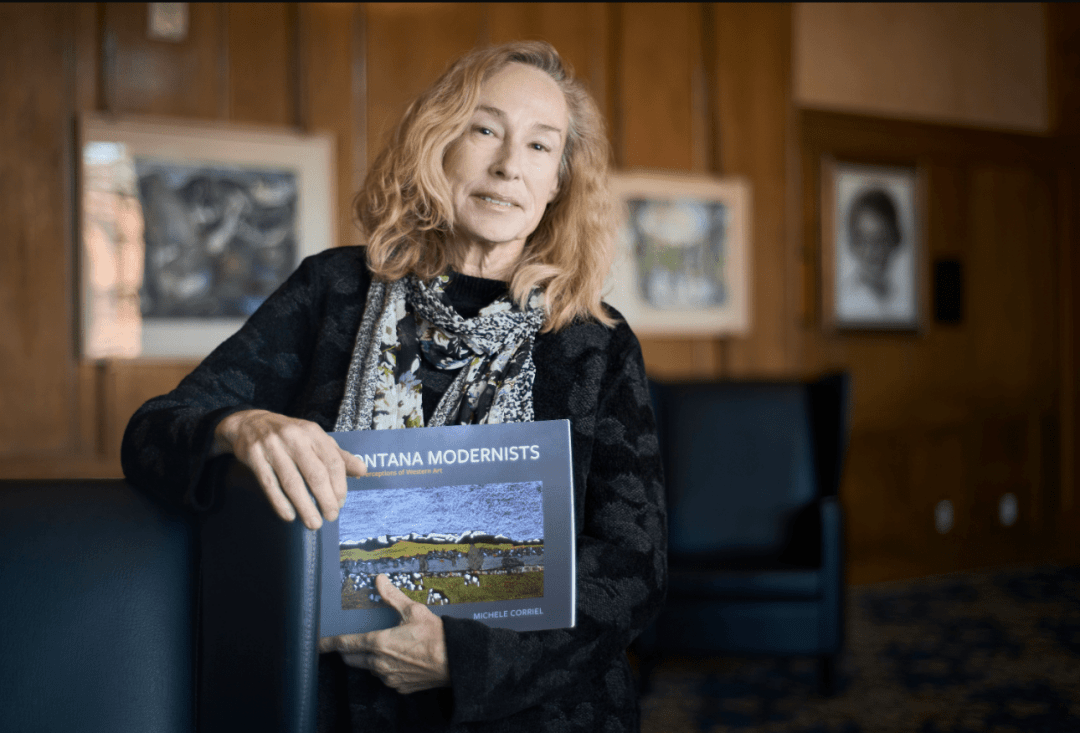Montana State professor's book on artists who engendered ‘Montana modernism’ wins regional, national awards
Thursday Nov. 16th, 2023

BOZEMAN – The Western History Association has announced that a book by Belgrade author and Montana State University assistant teaching professor Michele Corriel has won the national 2023 Joan Paterson Kerr Award for the best illustrated book on the history of the American West.
It’s the latest in a string of honors awarded to “Montana Modernists: Shifting Perceptions of Western Art,” which chronicles the lives and legacies of six mid-20th century artists who were largely responsible for the emergence of modernism in Montana art. Three of them taught at Montana State in Bozeman and one at Eastern Montana College, now MSU Billings.
“There were lots of great artists around, but these were the people that were the anchors,” said Corriel. “From them came more.”
Corriel first heard about the influential modernists during her 18 years as an arts writer in Montana, Idaho and Wyoming. She said that in interviews with artists, she would routinely ask about who had influenced them and “the same six names kept coming up.”
The names belonged to eastern Montanans Isabelle Johnson and Bill Stockton, and four others who settled in the Bozeman area after World War II – Jessie Wilber, Frances Senska, Robert DeWeese and Gennie DeWeese. They knew each other and “started a whole sort of zeitgeist in art,” according to Corriel.
“They had survived the Depression, they had survived the war, and there was starting to be a Cold War. The language they had used for their art while they were in art school wasn’t enough,” Corriel said. “For sure, in Montana, the art of (Old West artists) Charlie Russell and Frederick Remington was not going to suffice to tell the stories these artists needed to tell.”
Corriel said she didn’t see anyone else writing about the Montana modernist movement, so she set out to do it and do it right.
“I didn’t want it to be a coffee table book. I wanted it to be a book that was accepted into the canon,” she said.
Motivated to acquire the academic credentials to have her book taken seriously, Corriel enrolled in graduate programs at MSU. While working on her master’s degree in art history, she began researching Robert DeWeese, Senska and Wilber, all of whom had taught in the university’s art department. When she moved on to pursue her doctorate in American studies in the College of Letters and Science, she researched the other three artists more fully. All six ultimately became the subjects of her doctoral dissertation.
“I loved the experience; I loved the classes,” Corriel said. “I met fantastic professors. It got me on the right track and kept me going, and the whole process helped to make the book better.”
After graduating with her Ph.D. in December 2019, Corriel set to work rewriting the dissertation into a book structured around the themes of place, artistic lineage and community.
“Place because they are in Montana,” Corriel explained. “I talked about Isabelle Johnson and Bill Stockton the most in that chapter because they were ranchers and they knew the land – breathed it, lived it, ate it. Their art really, truly reflects place.”
Montana also drew artists with impressive lineages, who had been educated at prestigious institutions in the U.S. and abroad, including Columbia University and the Otis College of Art and Design.
“They were schooled in art and art history. They had degrees from amazing places,” Corriel said.
The final component – community – refers to the nurturing of the Montana modernists and their movement, thanks to the hospitality of the DeWeeses.
“It’s really what held them together,” Corriel said. “In the ’50s and ’60s, their house (in downtown Bozeman) became the center of the art movement. After they moved to Cottonwood Canyon, people would meet there, and they would talk well into the night.”
Though only four of the artists featured in her book were university professors, Corriel said, “All of these artists were teachers. All had the opportunity to teach art to young people in the ’50s, coming home from the war and explaining to them what they were trying to do and be open to the creative processes on both sides. They were always learning from each other – it was a very egalitarian pedagogy.”
The elder artists, in addition to treating their students as artistic equals, also taught them how to become teachers themselves, “and those artists became teachers down the line,” Corriel said. “It’s a legacy that still exists.”
Though the six artists profiled in the book are deceased, interest in them is alive and well, according to Corriel. Earlier this year, she curated a show based on her book at the Yellowstone Art Museum in Billings; next summer, she will do the same at the Holter Museum of Art in Helena.
In addition to the just announced Kerr award, “Montana Modernists” was awarded the Big Sky Award for the overall best book and first prize for art and photography at the 2023 High Plains Book Awards. It also won honors in the 2023 Montana Book Awards contest.
Corriel teaches in MSU’s University Studies program, and she has taught classes on Montana modernism in the School of Art in the College of Arts and Architecture.
“This is a subject that is so near and dear to my heart – I’m very passionate about the subject,” Corriel said. “I’m so honored and humbled by all of the attention this book has been getting.”
And though she is the person who researched and wrote the book, she said it is the artists who deserve the credit.
“They were amazing people who lived remarkable lives, who dedicated themselves to art and created this important art movement,” she said. “What would have happened without them?”
| Tweet |